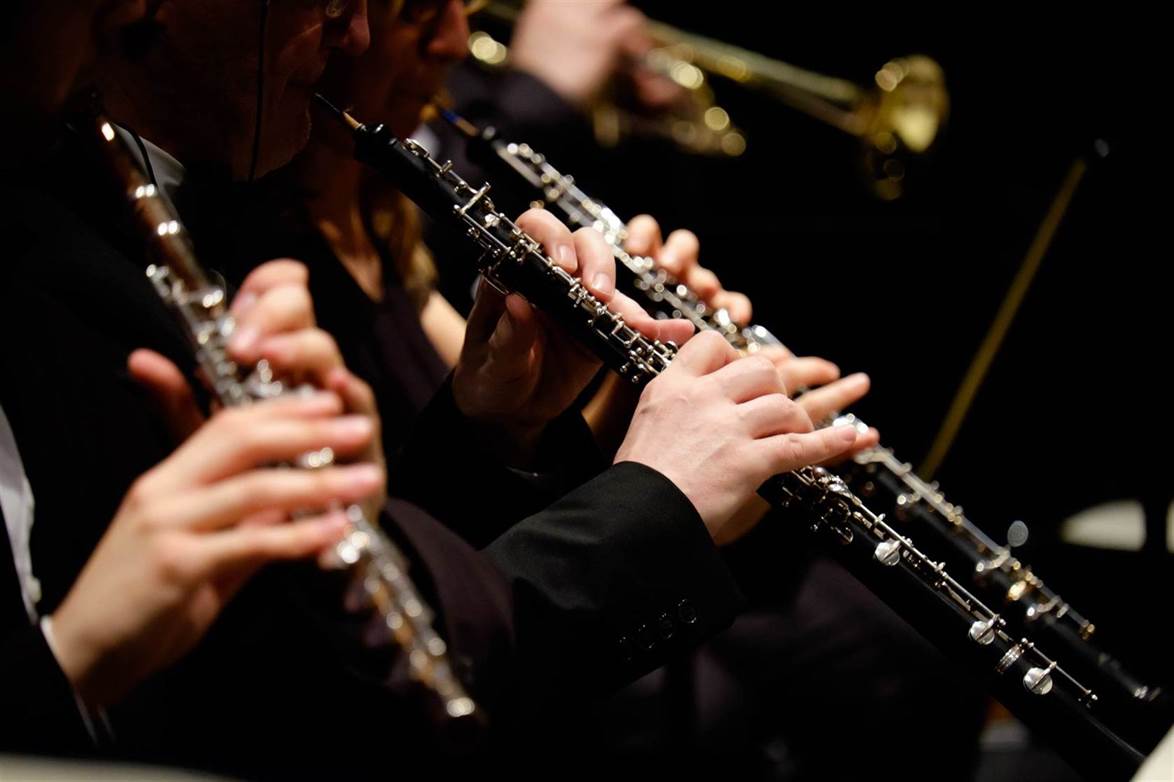Oboe Lessons
Oboe Lessons
We use a variety of techniques to bring you the best music education possible. The Hal Leonard Essential Elements course will help you learn through a variety of different media, from paper to video, teaching rhythms, music theory, and specific oboe techniques along the way. This course is often used for high school bands, so if you have a child enrolled in band it can help give them a head start. We also offer courses to help pass the Royal Conservatory of Music exams; the Royal Conservatory is the gold standard for music professionalism, and we’ll ensure you’re prepared to pass their rigorous examinations. Once you do, you’ll be well on your way to being a professional oboist. We can tailor lessons to exactly your needs; our instructors can personalize a program of study that best suits the needs of the student, whether it is to get a head start with a school band program, to reinforce and supplement a current school band program, to prepare for a university music program or just for fun! The journey to learning the oboe will take you to stunning places; let us be your guide.When trying to understand the place of an instrument in an orchestra, it is sometimes useful to look at the origin of its name. In the case of the oboe, its name is an interpretation of the French  “hautbois”, meaning “high wood”. The oboe is commonly found in the soprano range, quite a high register; it is also a woodwind instrument. The name, then, is quite descriptive, as the oboe is quite literally a high woodwind. Should you be looking for an exciting woodwind to play, one that takes not only manual dexterity and breath control but craftsmanship, look no further than the oboe.
“hautbois”, meaning “high wood”. The oboe is commonly found in the soprano range, quite a high register; it is also a woodwind instrument. The name, then, is quite descriptive, as the oboe is quite literally a high woodwind. Should you be looking for an exciting woodwind to play, one that takes not only manual dexterity and breath control but craftsmanship, look no further than the oboe.
Oboes were introduced around the mid-17th century, right in the middle of the Baroque era. They were derived from another instrument, known as the shawm, which bore some similarities to the oboe. At its origin, the oboe had three keys and was made of boxwood; today’s oboes are more complex in their construction, typically featuring forty-five keys made of metal and a body made out of grenadilla, a type of wood. The end of the oboe is known as the bell, owing to its shape, while the body is conical. At the tip of the oboe where the player blows is a double reed.
The double reed is an interesting piece of the oboe. Originally, oboists varied the sound of their instrument almost exclusively by changing the qualities of their breath; today, breath remains an important factor in oboe playing, for reasons we’ll discuss at greater length shortly. A reed is, essentially, a trimmed, flexible piece of cane grass; it must be rigid enough to endure use by the oboist, but flexible enough to vibrate at varying frequencies when blown on. The double reed setup of an oboe means that there are actually two pieces of reed vibrating against each other. One of the most important parts of learning the oboe is learning to craft one’s own reeds, scraping them until they are perfectly refined to the oboists own preferences. This is where the craftsmanship comes in; one must know one’s own oboe and breath qualities in order to craft the perfect reed. They must also refine the reed crafting process itself.
With all the attention and care, oboists take to crafting their own reeds, you can understand how important control and quality of breath must be. One of the most difficult techniques to master is creating long, quiet sounds; you must breath slowly enough that the quiet tone is created and sustained, but forcefully enough that the reed continues to vibrate. In order to accomplish this, one must be in great physical form; it takes a lot of work to achieve that level of longevity and nuance with your breath!
Breath isn’t the only techniques oboists need to work on, by any means. Certainly, one must work on fingerings; there are, after all, 45 keys, some used for rapid trills between notes, others used to play different notes, and one used to change the octave in which the oboe is being played. One must also master a variety of other techniques; in order to stop notes from resonating, for example, you can mute the reed with your tongue, and unmute it by removing the tongue. You can also create beautiful vibratos by using your diaphragm and throat muscles in order to change the quality of the notes being played.
The oboe is prominently featured in many orchestral arrangements, both as a solo instrument and as part of the larger orchestra; after all, the instrument was created in response to a need during the Baroque era. The oboe is less prominently featured in jazz and other popular Western music, but can be found in sections of Sketches of Spain by Miles Davis. Some particularly creative and progressive rock bands have used the oboe in their music, including The Clash, Roxy Music, Madonna, and progressive metal band Opeth.
Learning the oboe is truly an incredible feat; the instrument is incredibly versatile, and mastery takes years to achieve. There’s so much that goes into the instrument, from learning to regulate your breathing, to increasing your cardiovascular endurance, from learning the proper fingers to learning to craft your own reeds. You’ll even learn to adjust your embouchure, the enclosure of your mouth over the reed, to adjust for temperature and humidity. The amount of practice you can put into the oboe is astounding, which means you can always improve; the sky’s the limit, which is always an exciting notion.
 Developing such complex skills will improve your life in a holistic way. Think about all the benefits that come with learning the oboe. Certainly, the physical benefits to your health and dexterity are obvious, but there’s something deeper. Consider, for a moment, the amount of dedication it takes to master the instrument. You have to know yourself; to know the quality of your breath, to know how to create a reed that works well for both your instrument and yourself. That kind of self-knowledge comes with an incredible amount of self-confidence, as we tend to be most confident in what we know intimately. You have to be in touch with your emotions to play the music properly, to convey the feelings the composers felt, interpreted through your own subjectivity. You need to learn to read and understand the music, which is like learning a whole new language. This incredible combination of craftsmanship, creativity, emotional and rational knowledge, self-love, discipline and confidence can all be learned in part by taking up the oboe.
Developing such complex skills will improve your life in a holistic way. Think about all the benefits that come with learning the oboe. Certainly, the physical benefits to your health and dexterity are obvious, but there’s something deeper. Consider, for a moment, the amount of dedication it takes to master the instrument. You have to know yourself; to know the quality of your breath, to know how to create a reed that works well for both your instrument and yourself. That kind of self-knowledge comes with an incredible amount of self-confidence, as we tend to be most confident in what we know intimately. You have to be in touch with your emotions to play the music properly, to convey the feelings the composers felt, interpreted through your own subjectivity. You need to learn to read and understand the music, which is like learning a whole new language. This incredible combination of craftsmanship, creativity, emotional and rational knowledge, self-love, discipline and confidence can all be learned in part by taking up the oboe.
All of these things are wonderful for children to learn as well; a child in their developmental stages will be even more readily able to grasp the lessons that consistent oboe practice will grant them. That’s one of the many reasons why we offer in-home lessons; you might not have the time to bring your child to lessons, so we bring the lessons to you. Another wonderful facet of in-home lessons is that they allow you to develop your skills in a familiar, comfortable setting, something that can accelerate your growth.



